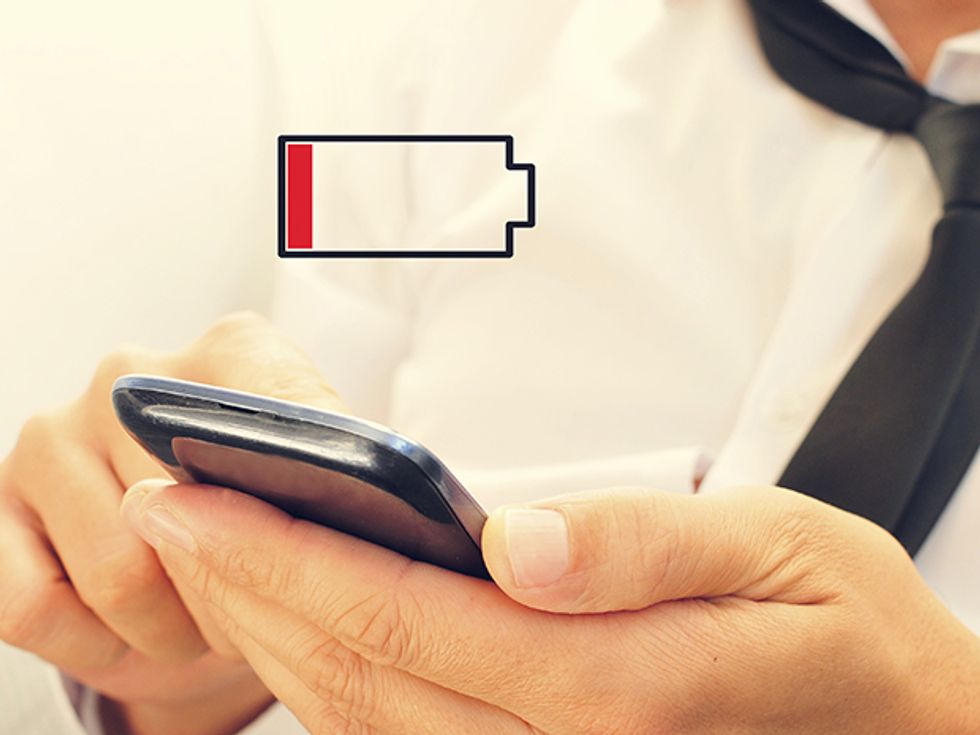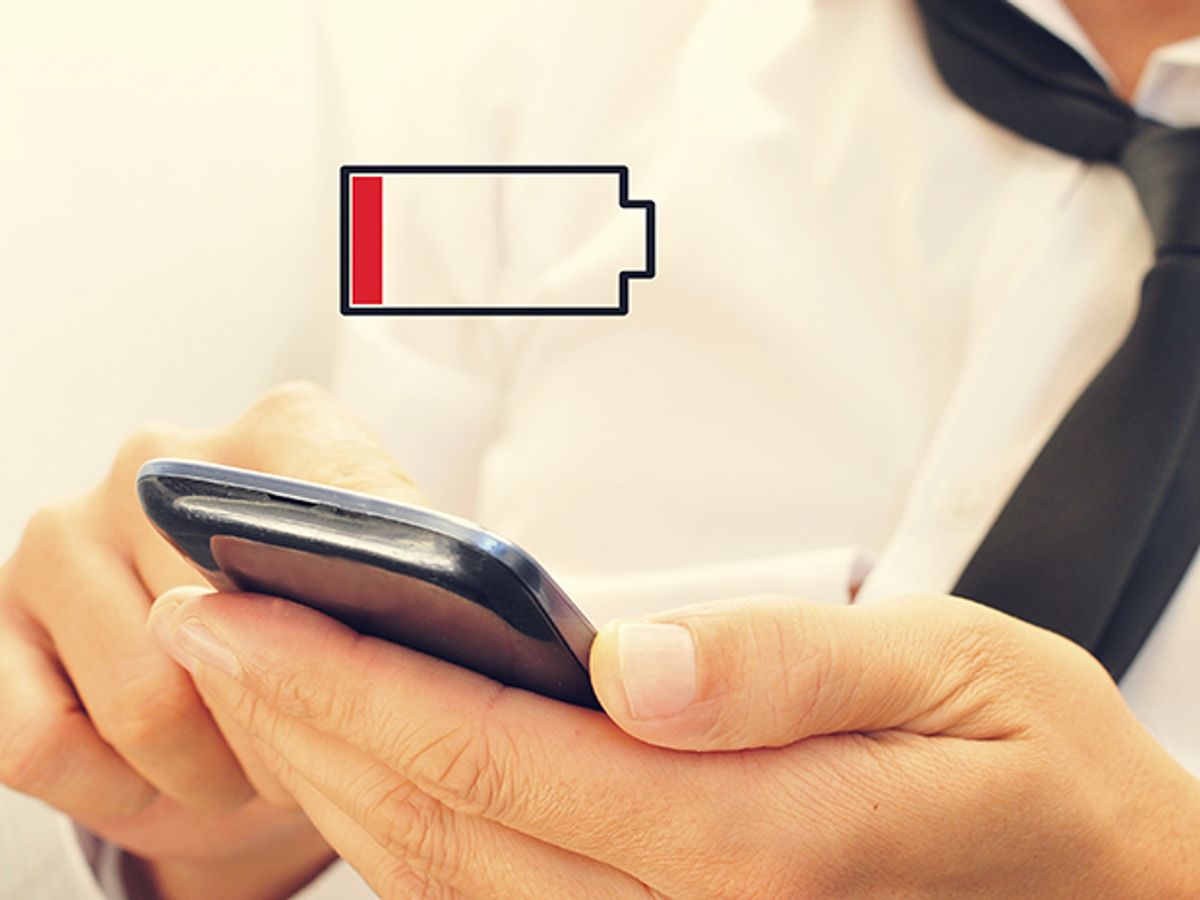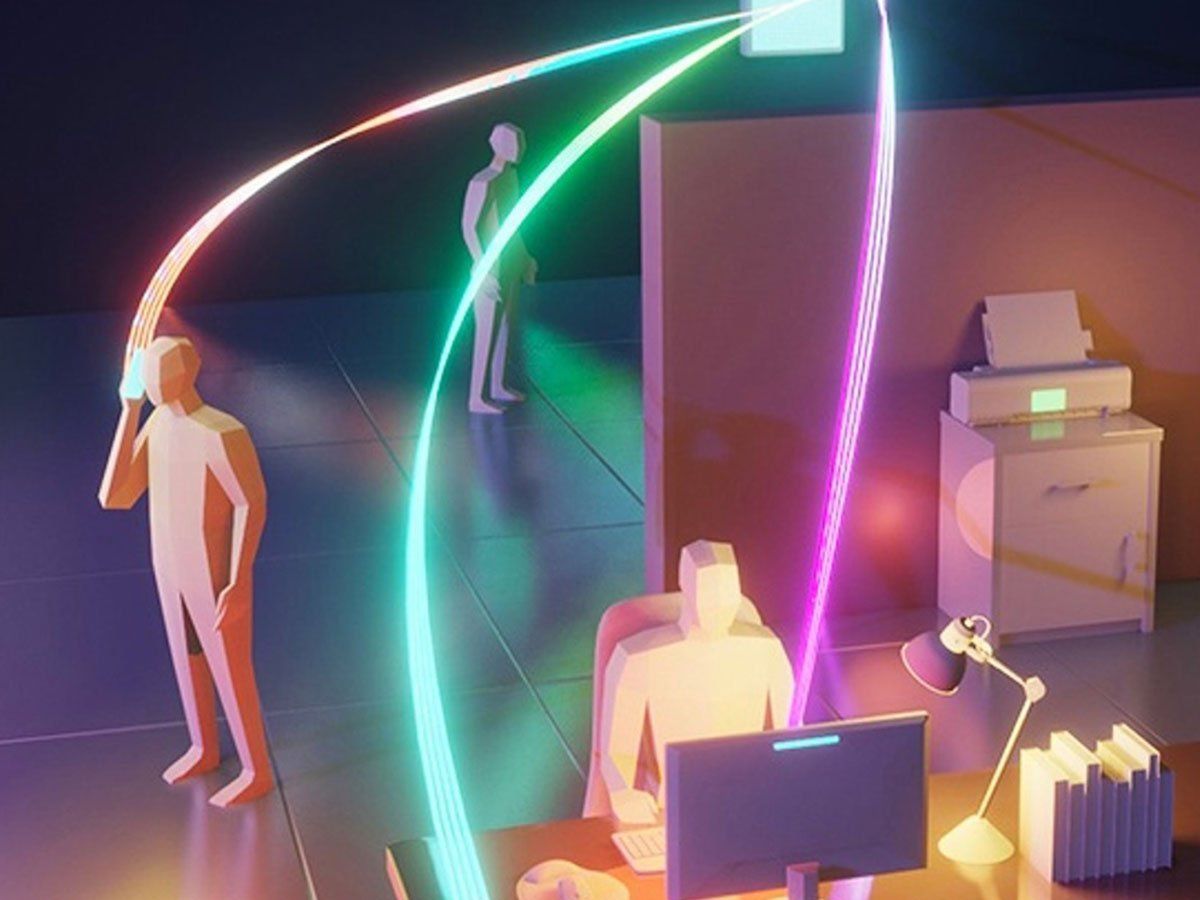
uBeam, a high-profile startup backed by some of Silicon Valley’s most prominent investors, has become a tech-industry sensation because of the wireless charging technology it claims to have in its labs. Scheduled for delivery next year, uBeam promises to use ultrasound to charge a mobile phone wirelessly, as you go about your business at home or chat away at your local coffee shop.
But even amid a tidal wave of publicity, the company has never publicly demonstrated a fully functioning prototype of its system. Nor has it ever produced an outside expert (who wasn’t an investor) who could attest to its ability to actually make and market a safe, effective version of what it is promising. To the contrary: uBeam is now facing an onslaught of questions about whether it can deliver any significant breakthrough at all.
Meredith Perry, who founded uBeam in 2011 when she was an undergraduate at the University of Pennsylvania, has said that her charging system will be as useful with household appliances as with mobile handsets. On its website, the company proclaims, “The impact uBeam will have across industries will be profound.” It even promises to improve health care. “Because bacteria can spread via electrical outlets,” the company says, hospitals using uBeam “will be cleaner and safer for patients.”
UBeam presentations give the impression that its system to charge devices throughout a home or business will be as easy to install and use as a Wi-Fi hot spot. But according to the very limited data uBeam has made available, its product transmits only a relatively small amount of power within a very limited radius—and then only if there is nothing between the transmitter and the receiver. Each room would need at least one transmitter, and possibly many more, with each device costing hundreds or even thousands of dollars—hardly the makings of the “world without wires” the company promises on its website.
Another major issue uBeam has never addressed involves the efficiency of the electronic components it will use to transmit and receive energy. Engineers say that this is perhaps the most crucial issue the company faces as it affects everything from the amount of power a uBeam system will require to the heat it will throw off while operating.
It is entirely possible, say engineers, that using uBeam to deliver a few watts of power through the air to a mobile phone could require scores, or even hundreds, of watts of power at the source. This, they say, could make uBeam an environmentally questionable way of charging an iPhone, especially when the alternative involves simply finding a nearby electrical outlet.
In some regards, uBeam is already walking back some of the more extravagant claims it has made in the dozens of stories that have been written about it. A September piece in TechCrunch, said uBeam “could power up your phone while it’s in your pocket when you’re at a café.” While that sort of ubiquitous charging would be appealing for its simplicity and convenience, experts consider it to be impossible on account of the line-of-sight nature of ultrasound waves.
A TechCrunch interview from Saturday concedes the point, saying, The system “requires a line of sight and can’t charge through walls or clothes.” The latest story, though, didn’t address the obvious discrepancy with the earlier account. The most recent story says uBeam could transmit up to 4 meters, far less than the 30 feet (9 meters) claimed in an earlier piece.
While the company has made several technical advances involving ultrasound, “the idea that uBeam is going to eliminate the need for wires is ridiculous,” said one person with knowledge of the situation.
Even as its shipping deadline draws near, the company has suffered an exodus of technical talent. With the exception of Perry, none of the engineers listed on uBeam’s patents are still at the company, according to their LinkedIn profiles. What’s more, people familiar with the situation say that uBeam engineers felt pressured by management to describe the technology in more optimistic terms than they were comfortable with.
Among the losses were key people. One of uBeam's departed engineers, Marc Berte, was extravagantly praised in a 2014 post by one of the company's venture backers, Mark Suster. He wrote that Berte “became so passionate about the idea that he decided to go full time and began recruiting some of MIT friends to the project.... Having Marc Berte and a team out of MIT who have designed systems like this for years gave one confidence we could do something others couldn’t copy and at price points that could make us market leaders over night.”
The company, based in Santa Monica, Calif., has raised more than US $20 million, with backers including the firm of Andreessen Horowitz, Mark Cuban, Yahoo’s Marissa Mayer, Tony Hsieh of Zappos, and a number of prominent venture capital firms. One April estimate gave it a possible valuation of $500 million.
Media coverage of uBeam has generally been enthusiastic, including a recent BBC report, as well as scores of magazine and newspaper stories. Fortune even asked in a headline if Perry was the next Elon Musk. But much of the breathless media coverage has since been shown to be technically inaccurate.
“The technology makes it possible for a device to move freely around a room, in a pocket or purse, while constantly charging,” said a New York Times article from last year. An earlier Engadget item said, “The shipping system will be able to detect a uBeam puck in the room and charge it if it’s anywhere within a 20- to 30-foot radius.”
Neither of those statements is true, something uBeam essentially conceded in the most recent TechCrunch article. While popular press accounts of the company have been laudatory, comments in technical Internet postings have been far more critical.
Perhaps the most devastating was a 3,000-word post on EEVblog Electronics Community Forum, which among other things, said that a large room will require dozens of transmitters to provide full coverage. The article also noted existing patents covering systems similar to uBeam’s, including one from 2004 “related to the transmission of electrical power...between electronic devices using ultrasound.” What is striking about the post is the nearly universal praise it has received for accuracy, with the endorsements coming from both persons familiar with uBeam as well as highly credentialed outside experts. Several from the former category said they couldn’t find any mistakes.
Many of the themes of the EEVblog piece were echoed by the well-known ultrasound experts IEEE Spectrum spoke with. Butrus T. Khuri-Yakub, a professor of electrical engineering at Stanford and a key developer of a method for converting ultrasound into electricity, says that Perry contacted him in 2011 to ask if the technology would be useful in the uBeam system she was contemplating. In recent weeks, Khuri-Yakub says, he had another lengthy technical conversation with Perry. Khuri-Yakub says he spoke with Perry as a professional courtesy and that he has no relationship with the company and is therefore not privy to the details of its plans. Nonetheless, he says he was “doubtful” that the company’s technology could charge mobile phones at rates “anywhere comparable to what one can do with a wire connected to a wall outlet.”
Perry has often said she wants to make wireless charging as common and easy as Wi-Fi. John Fraser, a Stanford-trained applied physicist who has spent his career in the ultrasound industry, says basic laws of physics make attaining that goal extremely unlikely.
“Efficiency is not a big deal when you’re transmitting a signal,” he says. “You might transmit a 1-watt radio signal for Wi-Fi, but your computer only needs to detect 1 microwatt to be able to process the signal. But efficiency is a very big deal when you’re transmitting power. I don’t think ultrasound over distances of tens of feet is ever going to be practical. Even 2 meters is pushing it.”
In a TED talk from 2012, Perry seems to brag that she knew nearly nothing of physics before starting the company—not even how a TV remote control worked. She says the basic idea for uBeam came after only a few hours of googling, and portrays herself as the first person to have thought of using ultrasound for wireless power. “It seemed like an awesome idea,” said Perry in the TED Talk. “Why hadn’t the ultrasound experts thought of it before?”
Actually, they had. Many times. David R. Andrews, a physicist whose firm, Cambridge Ultrasonics, based in England, advises companies about ultrasound designs, says ultrasound experts have been thinking about using it for wireless power for many decades but invariably dismissed it as impractical because of well-understood laws of physics.
Ultrasound signals attenuate extremely rapidly in the air. William M.D. Wright, an associate professor of mechanical engineering and ultrasound specialist at University College Cork in Ireland, told Spectrum that at a frequency of 60 kilohertz, which is within the range uBeam has discussed using, a signal will typically fade to half its original strength within just 3 meters, and to one-tenth at about 10 meters.
An even bigger challenge involves the efficiency of devices used to convert electrical energy to ultrasound, and then back again. There are a number of well-understood methods for doing so, but none of them are close to being perfectly efficient; even the best ones are no more than 30 percent efficient. Attenuation and conversion compound each other to magnify the power needed to deliver even a few watts.
“You can use ultrasound to transmit power, but it’s always going to be a tiny amount,” Andrews says. “The possibility of using uBeam technology to replace all cables in the home is a pipe dream.” He was especially critical of the notion of using a uBeam-style system to charge high-wattage household appliances and noted that because the technology is a line-of-sight system, each room in a house would need its own uBeam transmitter, each costing, he estimated, hundreds or even thousands of dollars.
According to uBeam, its plan is to integrate a receiver into the back cover of a mobile phone case; the larger the receiver, the more power it can collect. Transmitters could be located on walls or in ceilings. This means, though, that if a cellphone user were holding the phone up to his or her ear, as normally occurs, a hand would be blocking most of the receiver and thus most of the charging signals. The result would be the same if the user were holding his phone in the palm of his hand while looking at the screen.
(Curiously, a publicity photo released by the company and used in scores of articles shows a uBeam transmitter on the wall and a hand holding a phone wrapped in a white uBeam receiver. While the picture is presumably meant to show a mock-up of uBeam in action, because the receiver is pointed away from the transmitter, it is likely not receiving any substantial charge at all, says Cork’s Wright. The upshot is that the PR photo portrays a scenario in which the pictured transmitter is, in fact, useless.)
The only public uBeam demonstration was at a 2011 technology conference. Perry showed off a proof-of-concept system delivering power across a few feet. The demo, available on YouTube, seems to have wowed the Silicon Valley types in attendance and was the springboard for much of the company’s later fame. One prominent tech pundit in attendance wrote that the demo was “the closest I have seen to magic.”
But physicists interviewed for this article say any awe is completely unwarranted. Perry’s demonstration “was pretty trivial,” says F. Joseph Pompei, an MIT-trained physicist whose company, Holosonics Research Labs, makes directional loudspeakers that rely on an ultrasound technique. “It was very similar to other experiments done using ultrasound to transmit low levels of power over the last few decades.”
The 2011 unit was an early prototype using off-the-shelf components. Pompei says that “one would expect” that whatever technology the company has since developed is more sophisticated. “If they can pull it off, I’d love it,” he says. “But if they are confident about the technology, they should publish their data and show the device. And the press would be well-served to reserve the accolades for uBeam until after something has been shown that really works.”
Some of the press accolades might indeed be regarded as premature considering uBeam has yet to show an actual product. A staple of press accounts about uBeam is an unattributed report claiming that the company is negotiating major technology deals with the likes of Starbucks. One account from March said a pact with the coffee company was “especially close to signing.” No such deals have been announced, though, and uBeam declined to answer whether it was the source of these rumors. Starbucks declined to discuss the matter.
While uBeam has received a great deal of press attention, the company seems to work with the media only on its own terms. After Spectrum began making inquiries about the company, a uBeam spokesperson suggested the company might be willing to share certain unspecified internal data that would back up its claims—but with the stipulation that the data not be published.
The offer was withdrawn, though, when the company discovered that Spectrum was using LinkedIn to approach ex-uBeam employees for possible interviews, a relatively common practice for reporters.
(“What would you possibly gain from reaching out to a former executive assistant with no engineering background?” asked a spokesperson in an e-mail to a Spectrum reporter. “This isn’t TMZ; this is IEEE.”)
Spectrum e-mailed uBeam several lists of questions about the issues raised in this article, but the company declined to answer any of them. A uBeam spokesperson said the questions had a “negative slant” and added, “If you want to write about real science, for a scientific audience, you would reach out to us and work with us in a collaborative rather than offensive way.”
Over the weekend, uBeam provided an interview to TechCrunch, in which it provided a few details that it had previously withheld—saying, for example, that its system is designed to deliver a minimum of 1.5 W, and that a single transmitter could operate at distances of up to 4 meters. (That’s much less power than mobile phone owners are used to; the USB converters sold by Apple range from 5 to 12 W.) UBeam told TechCrunch that it would begin demonstrating its system next year.
(The TechCrunch article appeared less than three weeks after Perry had tweeted, “Going dark until product launch. I'll tweet about other things, but uBeam’s back in the vault. No press. Heads down & focused until launch.”)
Engineering experts were not particularly impressed with the new details, if only because they omitted perhaps the most important data point of all: the efficiency of the company’s electronics.
David W. Greve, from the department of electrical and computer engineering at Carnegie Mellon, wrote in an e-mail, “What’s missing is how they plan to achieve the required sound intensities and receiver efficiency. I am not suspecting that these are unachievable; what I am not sure about is how practical, efficient, and economical the transducers can be. My gut feeling is that a system of this sort will not be very efficient and will be practical for, at best, limited applications.”
The most recent TechCrunch article also quoted two ultrasound experts in an apparent attempt to bolster the company’s claims. But what was most striking about their quotes is how little they actually said in support of uBeam.
Both men—Matt O’Donnell, a medical ultrasound expert at the University of Washington, and Babur Hadimioglu, a Stanford-trained electrical engineer who works in the ultrasound industry—were quoted saying essentially the same thing: that wireless power via ultrasound is possible. That issue, though, was never in dispute. Neither man provided any opinion about whether uBeam could engineer and then effectively commercialize the system it is promising in a safe, efficient, and cost-effective manner.
In interviews with Spectrum, both men said they were contacted last week by uBeam and asked if they would provide statements for reporters. Hadimioglu said he was told by the company that it was expecting some negative publicity soon. (The company had already received several sets of questions from Spectrum.) Hadimioglu said he wasn’t familiar with the company before the call, and his research mainly involved reading its website.
“As a scientist, I want to be open-minded and not too skeptical,” Hadimioglu told Spectrum. “But I am an applied technologist and know that uBeam is facing a very challenging problem, to say the least.”
While she declined to answer Spectrum’s questions, Perry frequently posts to Twitter. Following the publication of the EEVblog post, she wrote a series of defiant tweets:
"First they ignore you, then they laugh at you, then they fight you, then you win." - Mahatma Gandhi
— Meredith Perry (@meredithperry)
October 21, 20154/ you just can't win with people that want to bring you down.
— Meredith Perry (@meredithperry)
October 21, 20155/ but I got news for you guys. I'm a resilient SOB and you're going to have to nuke me to kill me
— Meredith Perry (@meredithperry)
October 21, 20157/ peace out, bitches
— Meredith Perry (@meredithperry)
October 21, 2015This article was updated on 11 November to add new information.
About the Author
A former Wall Street Journal reporter, Lee Gomes is a freelance writer who lives in San Francisco and contributes regularly to IEEE Spectrum. In 2014 he interviewed luminaries Michael Jordan and Yann LeCun. He can be reached at lee@leegomes.com.



